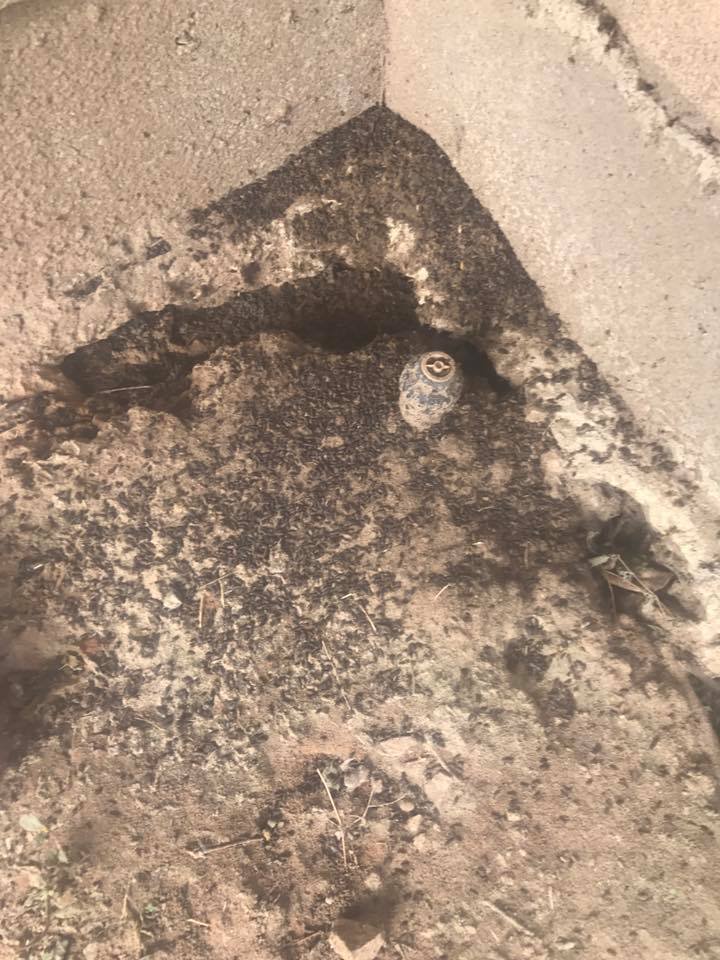How To Identify Bat Droppings?

As you can see from the photos on this page, there are many differentiating factors when it comes to determining bat poop. Bat feces is about the size of a staple and measures 1-3 cm in length; it resembles a black seed. Bat poop, also known as bat feces, is typically black in color. It’s likely that the bat poop isn’t fresh if it’s dry and brittle. The bat droppings are likely very fresh if they’re soft and mushy. If you see seed-like droppings that are a little oval and have no white at the end, you are most likely dealing with bats.
Another hint is that bat droppings are usually found in piles, whereas mouse droppings are generally scattered and not in piles. The amount of feces produced depends on the animal’s age, size, health, and diet. To get an idea of the average dropping, look at groups of droppings rather than just one or two. 1Go To Source vpr.tamu.edu -“Bat Awareness”
Where To Look For Bat Bat Feces?
 Guano builds up inside walls and attics, as well as on the ground and roof tiles. Bat droppings have a musty, acrid odor, and the stains they leave on walls or ceilings are sure signs of a bat infestation. Bat feces will accumulate where the critters are roosting. Look for droppings in attics, below awnings, and near-damaged roofing materials.
Guano builds up inside walls and attics, as well as on the ground and roof tiles. Bat droppings have a musty, acrid odor, and the stains they leave on walls or ceilings are sure signs of a bat infestation. Bat feces will accumulate where the critters are roosting. Look for droppings in attics, below awnings, and near-damaged roofing materials.
Due to the hazardous nature of bat droppings and the fact that bats are common carriers of the rabies virus, property owners should never attempt to remove bat infestations or clean guano deposits on their own.
Is Bat Guano Dangerous?
When a bat infestation is removed, many property owners believe the threat is gone. On the other hand, Bat guano can be dangerous in a home or even outdoors if it is in an area where people might disturb it. When bat guano is disturbed, spores are released that can cause disease. If bats are a problem on your property, keep in mind that a successful bat removal job requires three things:
- Confirmation The Home Is Bat Free
- Bat Exclusion Is Preformed To Prevent Future Infestations
- Bat Feces And Urine Is Decontaminated Professionally With Protective Gear
Working with bats puts you at risk for diseases like rabies and histoplasmosis, so we strongly advise you to leave this type of work to trained professionals. 2Go To Source dph.illinois.gov -“HEALTH HAZARDS ASSOCIATED WITH BIRD AND BAT DROPPINGS”
Can You Smell Bat Droppings?
As bat excrement decomposes in attics, wall spaces, and other voids, it emits an unpleasant odor. Outside a building with a large or long-term colony, the pungent, musty, acrid odor is often detectable. When animals die in inaccessible locations, similar odor issues arise. The odor also attracts arthropods, which can later infest other areas of a structure. 3Go To Source ldh.la.gov -“Bat Guano In Attics And Crawlspaces “
The Bat Feces Cleanup Process

- Confirmation Of Bats In The Attic: It’s never enough to rely solely on sounds. An important first step in confirming the presence of bats is a professional inspection and interview with the homeowner.
- Ensuring The Attic Is Bat Free: Before beginning any bat guano cleanup, wildlife technicians will ensure that all bats have been removed from the house. This process entails locating and reinforcing ALL access points and additional weaknesses that have yet to be exploited by bats or other animals.
- Assessing The Situation: Unlike most other animals, bats are likely to expel waste throughout an attic, rather than developing a latrine mindset and concentrating their waste in specific areas. All of the insulation in the attic must be decontaminated due to the dispersion of bat guano.
- Decontamination of Insulation: Histoplasmosis is caused by a fungus found in bat guano. These fungal spores are extremely fine, and if they become airborne, they can cause havoc throughout the house. Bat control experts start by spraying the insulation with a fine mist spray to ensure that the harmful fine particulates in bat guano don’t become airborne and spread throughout the house.
- Removal of Debris: Once the insulation has been treated to prevent harmful spores from entering the air, the insulation is carefully removed from the attic utilizing specialized equipment designed to remove the hazardous material safely. Any damaged materials are removed and replaced during this phase.
- Treatment with chemicals: The area is treated with chemicals that breaks down all organic matter before installing new insulation.
- Repairing the damage: Finally, new insulation is installed, making your attic (as well as the rest of your home) safe and warm.
What To Do If Bat Guano Is Found
Bat guano removal is a time-consuming and difficult task that should be left to professionals. The first thing to do when bat droppings are found, is to contact Animals Happen. Bat decontamination experts have the experience and resources to remove any bat excrement from your home safely. Rather than wasting time and money looking for the right equipment, you can contact professionals to have your entryways sealed and your home correctly sterilized.
Bat control technicians come equipped with years of experience, specialized guano vacuums, and the correct chemicals to eliminate any bacteria brought into your home through bat guano.
Sources:
- Texas A&M University Biosafety Occupational Health Program. “Bat Awareness.” Https://Vpr.Tamu.Edu, Texas A&M University, June 2017, vpr.tamu.edu/a-m-research/factsheets/pdfs/bat-awareness.
- “HEALTH HAZARDS ASSOCIATED WITH BIRD AND BAT DROPPINGS.” Dph.Illinois.Gov, dph.illinois.gov/sites/default/files/publications/health-hazards-associatedwith-bird-and-bat-droppings-050316.pdf. Accessed 14 July 2021.
- Balsamo, Gary. “Bat Guano In Attics And Crawlspaces.” Ldh.La.Gov, ldh.la.gov/assets/oph/Center-PHCH/Center-CH/infectious-epi/VetInfo/Rabies/BatGuanoInAtticsAndCrawlspaces.pdf. Accessed 14 July 2021.
